The root cause lies deep in today’s model architectures:
Modern AI models can only “think” in sequences of words —
which tends to become stochastically unstable with increasing length.
But thinking is more than language.
It has a functional dimension that gives thoughts a structure —
making chains more stable, more reliable, and more resilient.
KI beeindruckt in Sprache. Doch Denken ist mehr als Sprache.
Heutigen KI-Modellen fehlt die funktionale Denk-Ebene.
Lange Gedankenketten legen das Problem schonungslos offen:
KI beeindruckt in Sprache. Doch in längeren Gedankenketten zeigt sich eine ernüchternde Realität: Je länger die Wortfolgen, umso instabiler werden die Ergebnisse.
If you’re an enterprise and your LLM POCs don’t make it into production, talk to us — we’ll take your AI initiatives and AI business value to the next level.
CCMs haben diese funktionale Denk-Ebene — und zwar als integralen Teil ihrer Architektur. Damit schließen wir den Value Gap KI wird strukturell belastbar genug für Agentic AI in realen, anspruchsvollen Prozessen.
Heutige Modelle denken im Sprachraum — ihnen fehlt die funktionale Denk-Ebene. Dies ist jedoch die Grundlage für strukturiertes Denken und belastbare Schlussfolgerungen.
CCMs haben diese funktionale Denk-Ebene — und zwar als integralen Teil ihrer Architektur. Damit schließen wir den Value Gap KI wird strukturell belastbar genug für Agentic AI in realen, anspruchsvollen Prozessen.
Heutigen Modellen fehlt die funktionale Denk-Ebene — also die Fähigkeit, Informationen nicht nur als Wortfolgen, sondern als strukturierte Gedanken mit Bedeutung und Zusammenhang zu verarbeiten. Wir fügen diese Ebene hinzu — und schaffen damit eine neue Modellklasse: Cognitive Conclusion Models (CCMs). Das strukturiert und stabilisiert den Denkprozess — er wird belastbar genug für Kernprozesse. Banken, Versorger und Industrie setzen CCM-Technologie bereits ein — und überwinden damit den Value Gap.
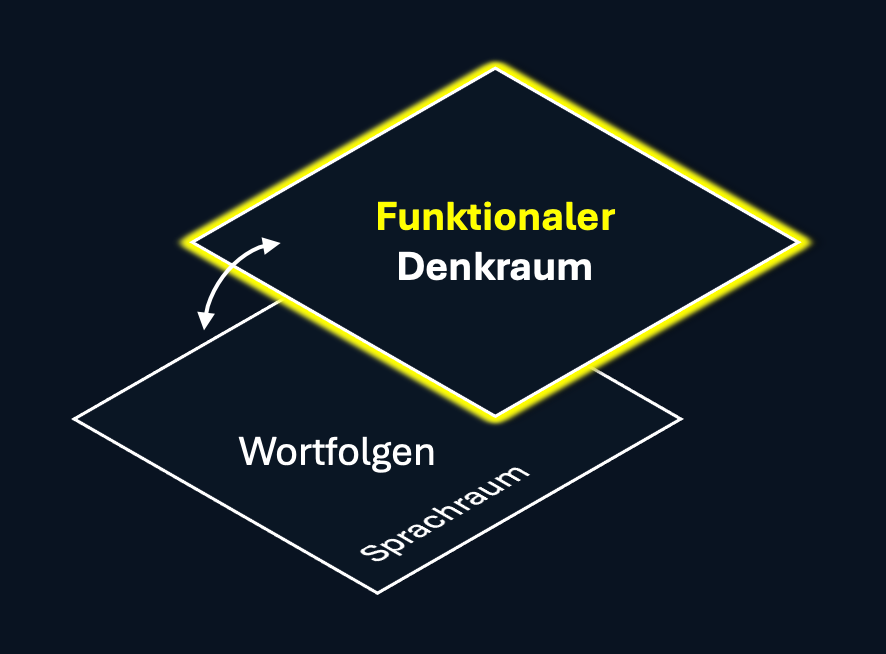

A single functional thought can often be expressed linguistically in dozens of different ways. In long chains of thought, this quickly leads to a combinatorial explosion. Example: $30^{15}$.
The resulting instability is not a training error—it is an inherent characteristic of the representation space itself.
While language models—thanks to their generalization capabilities—do not need to explicitly calculate every combination, statistical instability inevitably increases with the length of the chain.
Even if language models could implicitly learn functional structures, the resources required to do so would shatter all economically and technically realistic boundaries.
The Solution: A second representation space that maps the functional structure. This measure massively relieves the token space during longer chains—resulting in a stabilization of argumentative consistency and logical conclusions.
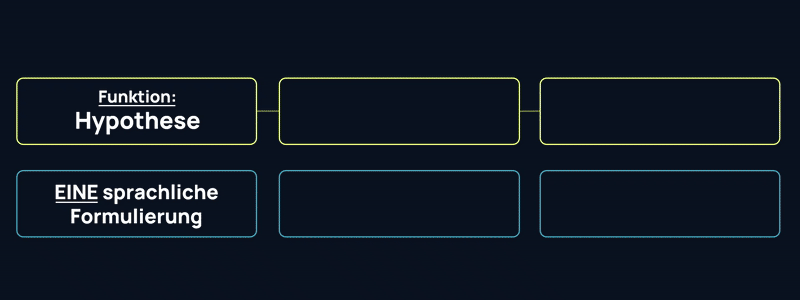
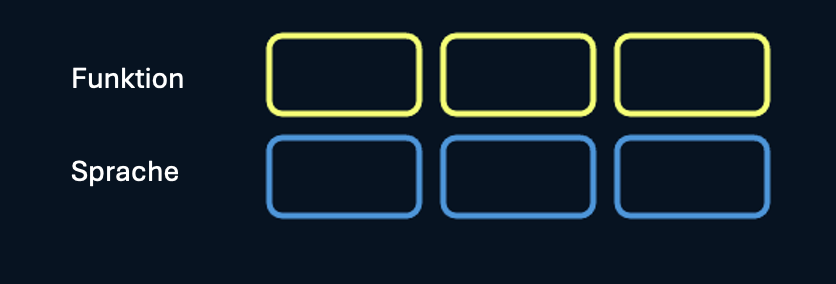
This transforms AI from a statistical text engine into a cognitive system.
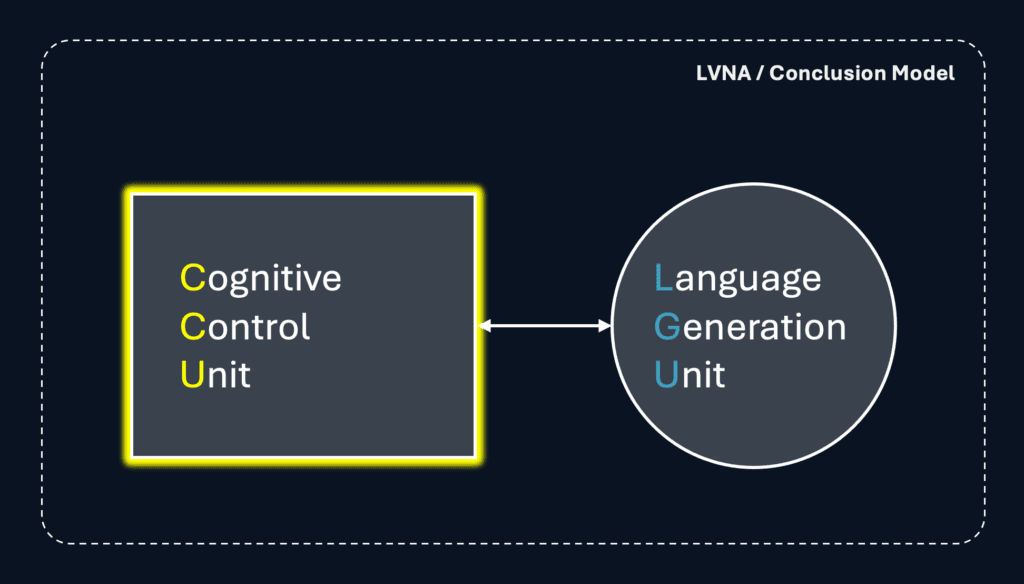
Dual-Space is the foundational paradigm for cognitive systems.
It integrates language and machine thinking at the architectural level.
In cognitive systems, stability, control, and traceability are not add-on features.
They are first-order principles — emerging directly from the architecture itself.
Around this paradigm, a complete technology stack is evolving:
a stack that makes generative AI safer, more controllable, and value-generating — while remaining simple and intuitive to use.
Dual-Space technology provides a new class of trustworthy and responsible machine thinking in business critical and sensitive domains: Cognitive Infrastructure.
CCMs are the first real-world implementation of the Dual-Space paradigm.
They use a functional cognitive space to generate structured and stabilized chains of reasoning.
CCMs are the engine of cognitive systems:
they enable reliable decisions, traceable conclusions, and well-orchestrated AI agents.
CCMs liberate machine reasoning from its constraints of the token space –
allowing generative AI to turn into structured, machine-level thinking.
This effectively gives birth to high-quality, higher-order cognitive work – run on machines.
| LLMs | LRMs | CCMs | |
|---|---|---|---|
| Focus | Language Generation | Reasoning in Language Space | Structured Reasoning & Conclusions |
| Paradigm | Single-Space | Single-Space | Dual-Space |
| Best for | Dialogue Applications | Simple Agents | Complex Agents |

>80%
100%
50-70%
Massively Reduced Operational Costs
Legal Certainty & Compliance Security

High-Value AI. For High-Value Processes.
Reasoning within the linguistic space hits a wall precisely where complex domain logic meets strict compliance requirements. This is exactly where we begin. Cognitive Conclusion Models enable deeply structured, traceable, and resilient AI inference—empowering them to perform genuine cognitive work within real-world business processes. For resilient AI decisions—and reliable AI actions.





Produktiv nutzbare KI-Modelle mit Dual-Space-Architektur
You don’t have to write off your previous investments. Our technology is just as simple and intuitive to use as existing AI language models.
From the outside, it remains structurally compatible with LLMs & LRMs.
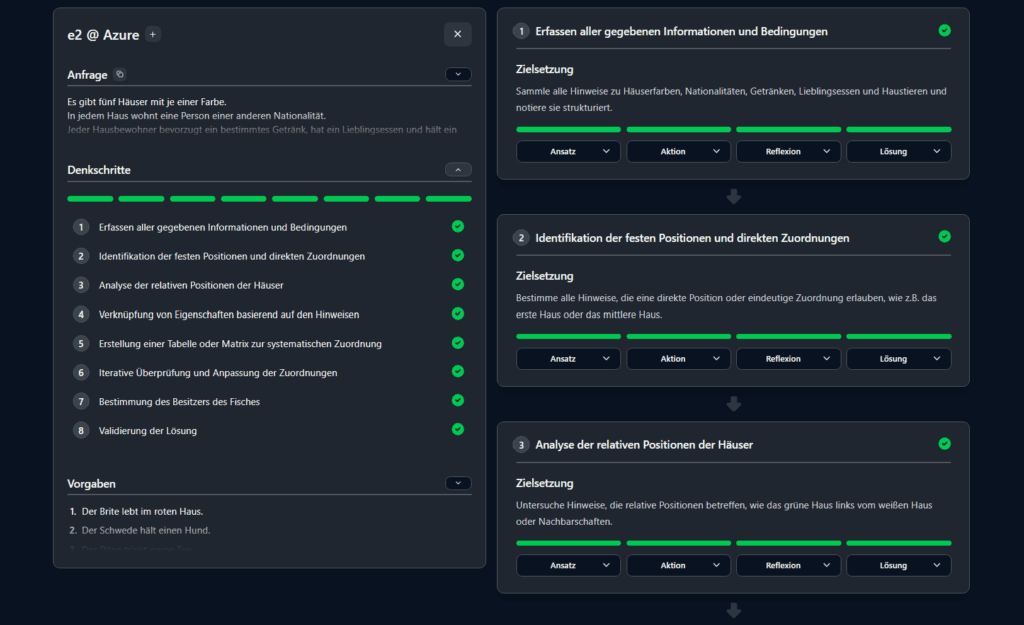
/conclusion API schema firsthand. 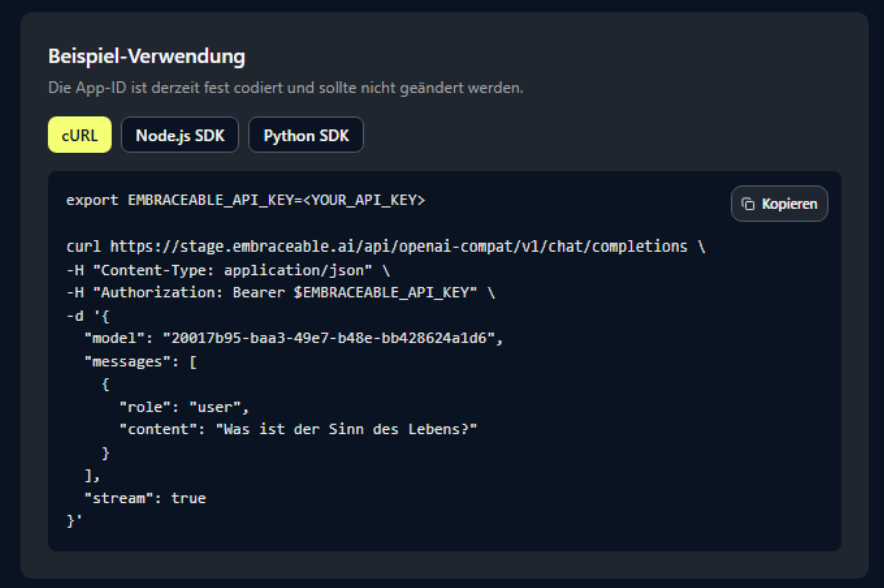

The reality, however, is that Generative AI has so far failed to deliver on this promise. Many organizations have invested—only to discover a lack of stability, traceability, and robust reasoning processes.
We are fully aware that trust in new AI paradigms is not granted automatically—and we respect that.
But Cognitive Conclusion Models are fundamentally different: They were engineered explicitly for machine reasoning—structured, traceable, and reproducible.
While hopes for deriving AI Business Value from Generative AI are fading, the demand is simultaneously rising. Machine Reasoning bridges this gap. Because: Stagnation is not an option.
The following Real-World Use Case is designed to offer you a new perspective on this subject.
Unternehmen suchen echte maschinelle Denkarbeit.
Doch die Realität ist: Generative KI konnte dieses Versprechen bislang nicht einlösen.
Viele Organisationen haben investiert – und mussten feststellen, dass Stabilität, Nachvollziehbarkeit und belastbare Denkprozesse fehlen.
Uns ist bewusst, dass Vertrauen in neue KI-Konzepte kein Selbstläufer ist — und genau das respektieren wir.
Aber Cognitive Conclusion Models sind von Grund auf anders:
Sie wurden explizit für maschinelles Denken entwickelt – strukturiert, nachvollziehbar und reproduzierbar.
Daher sind wir der Auffassung: CCMs eine Chance zu geben, ist weniger riskant, als die Chance zu verpassen.
Denn während die Hoffnungen auf AI Business Value durch generative KI sinken, steigt gleichzeitig der Bedarf.
Maschinelles Denken schließt diese Lücke. Denn: Stillstand ist keine Option.
Das nachfolgende Beispiel ist dazu gedacht, Ihnen eine neue Perspektive auf das Thema zu geben.
Unsere Conclusion Models bewähren sich bereits in einer Vielzahl produktiver Anwendungsfälle, bei denen es allesamt auf hochwertige und strukturierte Schlussfolgerungen mit entsprechender Transparenz und Nachvollziehbarkeit ankommt. Unsere Sandbox-Umgebung gibt Dir Zugriff auf eine Light-Version unserer Modelle, damit Du CCM-Technologie unverbindlich kennenlernen und ausprobieren kannst. Der Zugriff auf produktive, vollwertige CCM-Instanzen erfolgt im Rahmen eines Onboarding-Prozesses, bei dem wir gemeinsam die verantwortungsvolle Nutzung sicherstellen.
Explore how CCM technology can be deployed in a real-world business process. For illustration purposes, we use the “Child Benefit Application” (Kindergeld) use case.
Important Note: As a foundational technology, CCMs are domain-agnostic. This specific example serves solely to illustrate the underlying mechanics and workflow.
